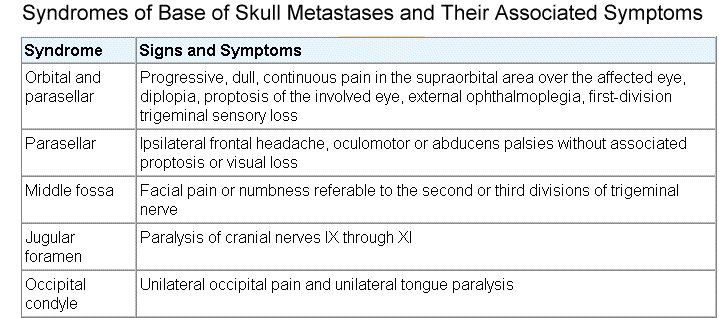|
SKULL-BASE METASTASES
Metastases to the skull base usually fall within the province of the otolaryngological surgeon or oncologist. Cancers of the breast, lung, and prostate have a propensity to produce skull-base metastases, which can entrap the cranial nerves and vessels at their exit foramina. Greenberg has identified five clinical syndromes: orbital, parasellar, middle fossa, jugular foramen, and occipital condyle. Skull-base metastases most commonly involve the middle cranial fossa, in the area of Gasserian ganglion. Other sites include the jugular foramen, affecting cranial nerves IX, X, and XI to produce posterior auricular pain; occipital condyle, causing ipsilateral hypoglossal palsy and occipital pain; parasellar region, exhibiting as unilateral frontal sensory loss, headaches, and ophthalmoplegia; and orbit, presenting as proptosis and external ophthalmoplegia. Often the cancer appears as a thin skin of tumor cells, termed en plaque. Owing to their insidious subacute onset, skull-based metastases are difficult to identify on MRI or CT where masses may coalesce with changes of prior irradiation or surgical extirpation. Often the T2-weighted changes in contiguous bone after radiotherapy may be confused with tumor. Radionucleotide bone scans with careful evaluation of the skull may improve diagnosis. Treatment depends on the nature of the underlying tumor and is typically confined to irradiation as previously described. |
|
|
